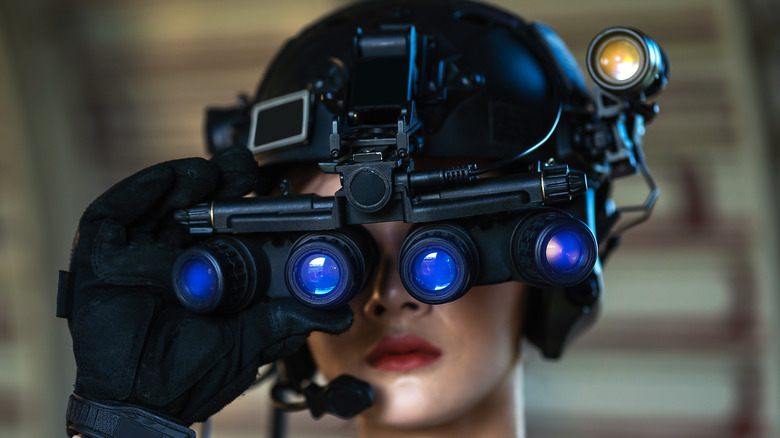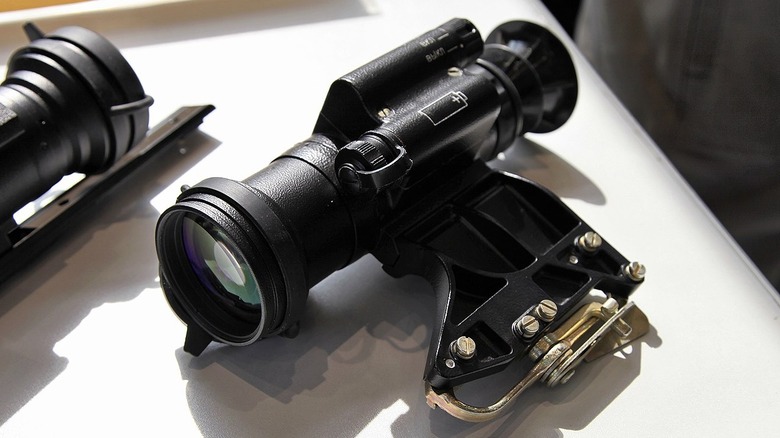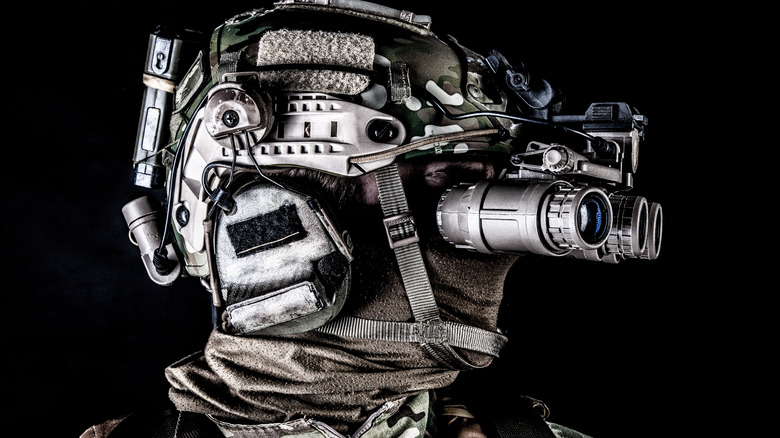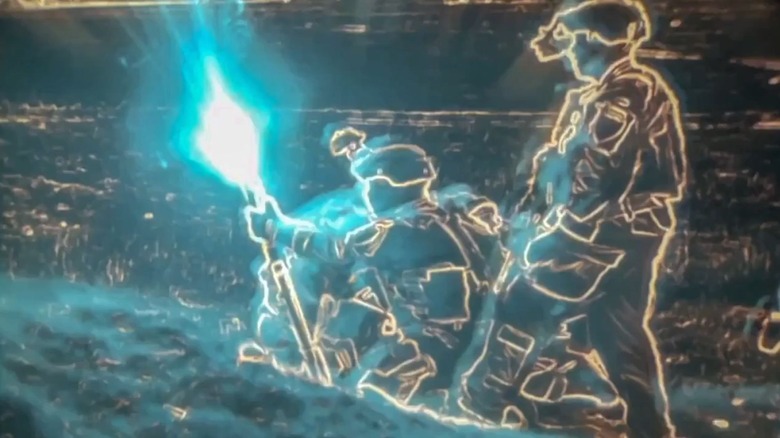How Do Night Vision Goggles Work?
When most of us think of night-vision goggles, we probably picture clandestine special forces, creeping through jungles, vigilant for any sign of the enemy. Of course, if we had a pair of night-vision goggles we'd probably use them to find our way to the bathroom at night without stepping on a Lego or a cat.
The technology that allows us to see in low light has been with us since World War II and was used by the American, German, and Soviet armies. As the mechanisms that made these devices evolved, the improvements were measured in "generations." Although night-vision technology is still commonplace on the world's battlefields, it's increasingly available to consumers. Baby monitors with night vision are available online for less than $50.
Today, third- and fourth-generation night vision technology is generally reserved for military and law enforcement use. Meanwhile, most budget devices available to consumers use Generation 0 or Generation 1 technology. The differences between these generations can be dramatic from the perspective of the user, but underlying all of them is similar technology (via HowStuffWorks).
Generation 0
Night-vision devices first saw widespread use during World War II and were based entirely around infrared light. The fundamental technology underlying these devices was something called the infrared image converter. At its most basic level the infrared image converter consists of two primary parts. The first is a photocathode. In the early days this was glass coated in a silver-cesium oxide mixture. When this photocathode is struck by a photon of infrared light, it emits an electron. The second part is a positively-charged screen (anode) to which the emitted electrons are attracted. The screen is made of a fluorescent or phosphorescent material so that whenever it's struck by an electron, it illuminates.
The big drawback to these systems is that these primitive infrared image converters weren't very efficient at converting infrared photons to electrons. In order to be viable, infrared spotlights had to be employed to ensure enough photons were available to produce a meaningful image (via The Radio Constructor). The problem with this system is the infrared spotlight. Although it's invisible to human eyes, to anyone with an infrared image converter, it would stand out like a beacon.
Generation 1
The next leap in night-vision technology came with the discovery of new chemicals with which to make photocathodes. These new materials allowed the night-vision devices to be used in moon or star light without the aid of infrared spotlights. In the parlance of the industry they are considered passive night-vision devices, in contrast to the previous generation, which is considered active night vision.
The other major advance in the technology came when it was discovered that an array of image converters could be used to intensify the ambient light even more. These arrays are called cascade image tubes and they work really well. Initially, these new systems were too large to be useful without mounting them on a vehicle, but by the time of the Vietnam War, individual soldiers were using them in the field (via GlobalSecurity).
Nearly all budget night-vision devices available to consumers are based on technology of generations one and zero. The major drawbacks to devices from these generations are their short working lives and poor resolution (via Sightmark).
Generation 2
The next generation of night-vision devices is primarily defined by the addition of a microchannel plate to the image intensifier tube. The previous generations of devices relied on speeding up the electrons to intensify the image, bringing out more light. With a microchannel plate, the electrons aren't sped up, they're multiplied.
Microchannel plates are thin plates of glass perforated with an array of microscopic tubes. They're given an electric charge and placed between the photocathode and the screen. When the electrons pass through the tubes in the glass plate, they rebound off the walls of the tube, causing an electron to be discharged. The discharged electrons cause more to be discharged, leading to an avalanche effect (via HowStuffWorks).
Generation 2 devices are about 20 times more powerful than those without microchannel plates, allowing for their use without ambient light from the moon or stars. These devices are available to the public in the U.S. but cost about 10 times more than their Generation 1 counterparts (via GlobalSecurity).
Generation 3
Mechanically, Generation 3 night-vision devices are the same as Generation 2, in that they have a photocathode and a microchannel plate which amplifies the light. The first technological leap for this generation is the gallium arsenide-coated photocathode which is more efficient at converting photons to electrons. It's also sensitive to more wavelengths of infrared light, so it doesn't just transmit more, it sees more (via GlobalSecurity).
One problem with the gallium arsenide photocathodes is they are very sensitive to impurities in the intensifier tube which can shorten their operational life. One source of these impurities is the microchannel plate which produces lots of ions. To limit the ions it emits, and prolong the life of the photocathode, the microchannel plate is coated with a thin layer of aluminum. The unavoidable consequence of this is a reduction in image quality, though it's still much better than Generation 2 devices (via Oxford Instruments).
The system of designating night-vision devices by "generations" was ended in 2001, so there are no generations past Generation 3 (via Photonis). But that doesn't mean that night-vision technology has stopped moving forward.
State of the art
The most advanced night-vision devices being made today use a feature called auto-gating. This basically turns the image intensifier tube on and off very quickly and adjusts the power input to the microchannel plate to ensure that a consistent number of electrons are hitting the phosphorescent screen. This not only prevents blinding from sudden changes in light, it also lessens blooms from bright light sources and protects the intensifier from damage (via HowStuffWorks).
The absolute bleeding edge of night-vision technology was shown off by the Army on Twitter last year. In addition to state-of-the-art intensifier tech, the new head-mounted binocular device incorporates thermal imaging, augmented reality, and a slew of other features that turn the battlefield into a video game. Go ahead and click the link. You need to see it to believe it (via L3Harris).
This sort of technology is likely a harbinger of things to come. Don't expect the fundamental mechanics of night-vision to drastically change in the near future; instead, look for a confluence of existing technologies to drag us kicking and screaming into a cyberpunk future.





